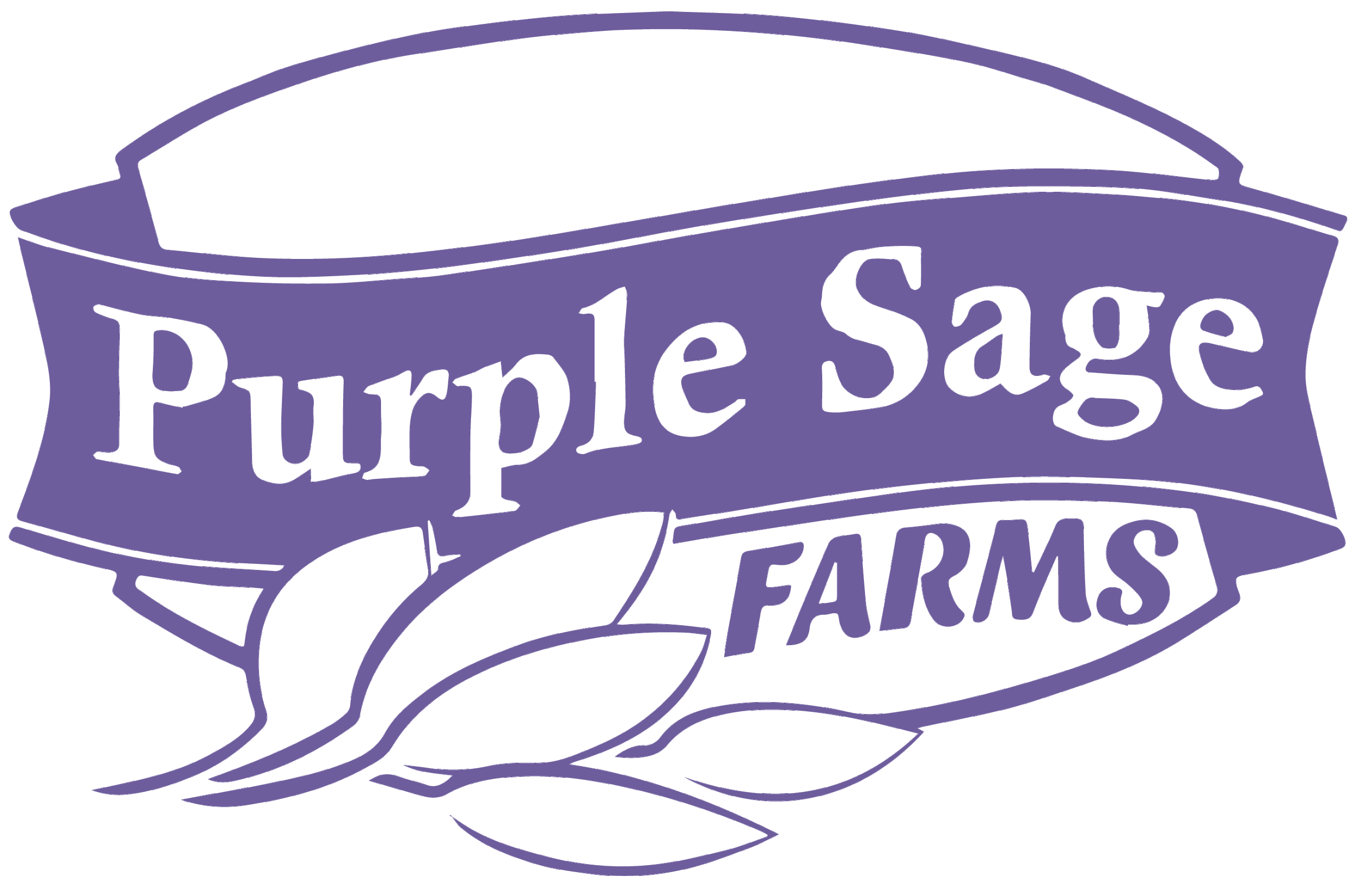The Pastured Sheep of Purple Sage Farms
Just released into a new paddock, a stylish ewe stands in the fresh pasture at Purple Sage with her twin lambs. Photo by Arlie Sommer, Aug 2020.
By Arlie Sommer and Tim Sommer, June 2021
Each spring we gather at the farm for a few weekends to doctor sheep—administering vaccines, castrating yearling males, treating lambs with scours, and counting the herd. Purple Sage Farms is known for herbs and specialty produce—what do sheep have to do with it?
“We raise sheep to manage the largest portion of our land. Grazing is a powerful tool to build soil,” said Tim Sommer. The family didn’t run sheep on the land when the farm was started in 1989, but have always had livestock grazing the pasture: cows, horses, and even goats. Sheep were introduced in 2001.
An important element of small, diverse farms, livestock add to the larger ecological system. Sheep feed on pasture clover, forbes, and grasses, spring through fall. In winter they subsist on stockpiled pasture and alfalfa hay. We collect the sheep manure produced, mix with wood shavings, straw, and other farm waste to form a nutrient-rich compost for the crops.
Tim Sommer carries a recently vaccinated lamb to return it to pasture. Photo by Arlie Sommer, May 2021.
Spring Round Up
While Purple Sage doesn’t send sheep to the mountains, or the open range, or sheer (Katahdins and Dorpers are a hair sheep breed, with less wool and flavorful meat), lambs and mother ewes still require attention each spring.
“It’s a major effort and involves numerous weekends, with each one having a different focus of lamb care,” said Tim.
The Year Cycle
At Purple Sage, Ewes lamb, or give birth, in early winter and need some help to get out of dangerous weather conditions. Pregnant ewes are immunized for clostridium source diseases, like tetanus, that sheep encounter by eating what grows in the soil. They will pass immunity to their lambs.
Later, in May and June, friends and family gather at Purple Sage for a big push to count all of the new lambs, give final vaccinations, and band males with an elasticator.
“This weekend requires many hands to accomplish: catching fast running lambs and carrying them to the lineup for the various treatments, and then to be counted by my mother, Ava,” said Tim.
Tim’s mother, Ava Lutteman, counts sheep each spring during the roundup. Photo by Arlie Sommer
A System of Prevention
We employ numerous interventions to treat parasites and keep sheep healthy, including mixing diatomaceous earth in their salt and feeding the sheep garlic extract.
We also move the animals regularly (rotational grazing) and grow taller grasses so the sheep don't swallow snails that are parasite vectors. Parasites hatch from manure, so a long rest from the pasture allows parasites to complete their life cycle without the sheep being present. Older animals are more resilient to parasites, while younger animals are more affected and susceptible.
When the lambs are held close, they are surprisingly calm and cooperative. Tim has built out the barn with birthing pens, heat lamps, a narrow chute for the sheep to pass through and a seating area for those handling lambs.
In the last gathering at the end of June, lambs are old enough to be separated from their mothers, or weaned, a traumatic experience for nursing babies. By this time, lambs are more than half the size of the ewes, who are glad to be rid of the ravenous adolescents.
Mike Sommer holds his daughter, Evelyn, in the corral. Photo by Arlie Sommer, May 2021.
Sheep in the Family History
Tamara Sloviaczek grew up shearing and doctoring sheep each spring on her family’s farm in Middleton, Idaho. Her father was one of the few farmers in Middleton who raised sheep and he taught Tim and numerous Middleton FFA students how to care for lambs. Born in 1912 and a first generation American, Bill Sloviaczek, had been a shepherd boy near Billy Creek on the Lower Salmon River, Idaho, watching herds in the summer from the age of seven.
Billy Creek was where the Nez Perce crossed the Salmon River to escape the cavalry after the US broke our treaties and forced them from their land in 1877 (THE LOWER SALMON RIVER BOATING GUIDE, VINEGAR CREEK TO HELLER BAR, p 37). The Sloviaczeks and other homesteaders farmed on this stolen land with support from The Homestead Act of 1862 (American Indians and the Homestead Act). It’s wrong that homesteaders, our family included, prospered from the genocide of the Nez Perce and important to share this history so we can begin to understand how to make amends as a society.




